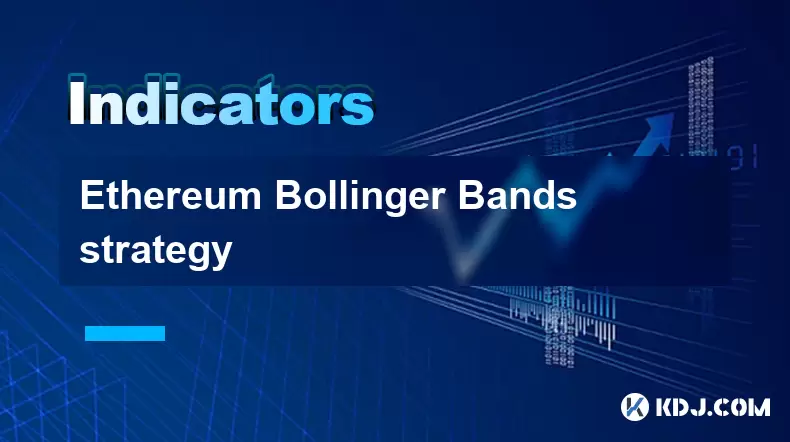-
 Bitcoin
Bitcoin $120400
1.77% -
 Ethereum
Ethereum $3615
7.90% -
 XRP
XRP $3.580
17.84% -
 Tether USDt
Tether USDt $1.001
0.06% -
 BNB
BNB $729.4
1.25% -
 Solana
Solana $179.9
5.04% -
 USDC
USDC $0.0000
0.01% -
 Dogecoin
Dogecoin $0.2311
8.22% -
 TRON
TRON $0.3226
4.04% -
 Cardano
Cardano $0.8490
12.85% -
 Hyperliquid
Hyperliquid $46.45
0.72% -
 Stellar
Stellar $0.4913
8.54% -
 Sui
Sui $4.027
2.00% -
 Chainlink
Chainlink $18.51
11.67% -
 Hedera
Hedera $0.2818
21.51% -
 Avalanche
Avalanche $24.03
7.40% -
 Bitcoin Cash
Bitcoin Cash $508.5
2.90% -
 Shiba Inu
Shiba Inu $0.00001496
3.24% -
 UNUS SED LEO
UNUS SED LEO $8.961
1.83% -
 Toncoin
Toncoin $3.264
3.13% -
 Litecoin
Litecoin $104.6
8.15% -
 Polkadot
Polkadot $4.389
6.11% -
 Uniswap
Uniswap $9.924
10.63% -
 Monero
Monero $337.9
0.49% -
 Pepe
Pepe $0.00001376
2.79% -
 Bitget Token
Bitget Token $4.830
2.46% -
 Ethena USDe
Ethena USDe $1.001
0.05% -
 Dai
Dai $1.000
0.02% -
 Aave
Aave $325.2
1.66% -
 Bittensor
Bittensor $423.7
-0.85%
Ethereum Bollinger Bands strategy
Bollinger Bands help Ethereum traders spot volatility, trend reversals, and potential breakouts by analyzing price action relative to dynamic support and resistance levels.
Jul 17, 2025 at 03:28 am

Understanding Bollinger Bands in the Context of Ethereum Trading
Bollinger Bands, developed by John Bollinger, are a popular technical analysis tool used across financial markets, including cryptocurrency trading. In the context of Ethereum (ETH) trading, these bands help traders identify potential price volatility and possible overbought or oversold conditions.
The indicator consists of three lines: a simple moving average (SMA) in the middle, typically calculated over 20 periods, with two outer bands set at a specified number of standard deviations above and below the SMA. These bands dynamically expand and contract based on recent price volatility. When the market is calm, the bands narrow; when volatility increases, they widen.
For Ethereum traders, this dynamic behavior can signal key moments to enter or exit trades. The strategy relies heavily on interpreting how ETH price interacts with the upper and lower bands, which act as relative support and resistance levels.
Setting Up Bollinger Bands for Ethereum Charts
Before applying any strategy, it’s essential to configure the Bollinger Bands correctly on your charting platform. Most platforms like TradingView, Binance, or MetaTrader allow customization.
- Open your preferred trading chart and select the Bollinger Band indicator.
- Set the period to 20, which is the default and most commonly used value.
- Adjust the standard deviation multiplier to 2, which determines the width of the bands.
- Choose the source data as close prices, unless you prefer using open or high/low values for specific strategies.
Ensure that the timeframe matches your trading style—intraday traders may use 1-hour or 4-hour charts, while swing traders might opt for daily or weekly intervals. Once applied, observe how Ethereum's price reacts near the bands to spot potential trade setups.
Bollinger Band Squeeze Strategy for Ethereum Volatility Breakouts
One of the most effective applications of Bollinger Bands in Ethereum trading is identifying volatility squeezes. A squeeze occurs when the bands contract tightly around the moving average, indicating low volatility and often preceding a sharp price movement.
To implement the squeeze strategy:
- Monitor when the distance between the upper and lower bands narrows significantly.
- Look for a candlestick closing outside the bands following the squeeze, signaling a potential breakout.
- Use volume indicators like OBV (On-Balance Volume) or Chaikin Money Flow to confirm the strength of the move.
- Place a stop-loss order just beyond the opposite band to manage risk effectively.
This strategy works particularly well during sideways or consolidation phases, where Ethereum is range-bound before a major news event or macroeconomic shift triggers a breakout.
Middle Band Rejection and Pullback Entry Strategy
Another practical use of Bollinger Bands involves the middle SMA line as a dynamic support or resistance level. Traders often look for price action rejection patterns around this line to determine trend continuation opportunities.
Here’s how to execute this strategy:
- Identify an ongoing trend in Ethereum’s price, either bullish or bearish.
- Watch for a pullback to the middle band, where price should find temporary support or resistance.
- Confirm the bounce using candlestick patterns such as pin bars or engulfing candles.
- Enter the trade once the price moves back in the direction of the trend.
- Set a stop-loss slightly below the recent swing low or above the swing high depending on the trade direction.
This approach helps traders ride the trend more efficiently, especially on higher timeframes where false breakouts are less frequent.
Bollinger Bands and RSI Confluence for Overbought/Oversold Confirmation
Combining Bollinger Bands with the Relative Strength Index (RSI) enhances the accuracy of trade signals. While Bollinger Bands suggest extremes in price movement, RSI confirms whether the asset is overbought (>70) or oversold (<30).
To apply this confluence strategy:
- Overlay the RSI indicator on the same Ethereum chart.
- Wait for the price to touch or breach the upper Bollinger Band alongside an RSI reading above 70.
- For short entries, place orders after confirmation from bearish candlestick patterns.
- Conversely, for long entries, wait for the price to hit the lower band with RSI below 30 and a bullish reversal pattern.
- Always use tight stop-loss placements to protect capital.
This combination filters out many false signals and improves risk-to-reward ratios, especially during choppy or sideways market conditions.
Frequently Asked Questions (FAQs)
Q1: Can Bollinger Bands be used alone for Ethereum trading decisions?
While Bollinger Bands provide valuable insights into price volatility and potential reversals, they work best when combined with other tools like volume indicators, candlestick patterns, or momentum oscillators. Sole reliance on Bollinger Bands can lead to misleading signals, especially in volatile crypto markets like Ethereum.
Q2: How do I adjust Bollinger Bands for different Ethereum trading timeframes?
The standard settings (20-period SMA and 2 standard deviations) work well across most timeframes. However, intraday traders may benefit from shorter periods like 10 or 15, while longer-term traders could extend the period to 50 or more. Adjustments should align with your trading goals and risk tolerance.
Q3: What does it mean when Ethereum’s price consistently touches one Bollinger Band?
Persistent contact with the upper band suggests strong bullish momentum, while repeated touches of the lower band indicate sustained bearish pressure. This phenomenon, known as a "ride," can signal powerful trends but also warns of potential exhaustion if not supported by volume and momentum indicators.
Q4: Are Bollinger Bands reliable during major Ethereum news events?
During high-impact events like ETF approvals, regulatory changes, or network upgrades, price movements can be erratic and extreme, making Bollinger Bands less reliable. It's advisable to incorporate news sentiment analysis or volatility filters during such times to avoid whipsaw trades.
Disclaimer:info@kdj.com
The information provided is not trading advice. kdj.com does not assume any responsibility for any investments made based on the information provided in this article. Cryptocurrencies are highly volatile and it is highly recommended that you invest with caution after thorough research!
If you believe that the content used on this website infringes your copyright, please contact us immediately (info@kdj.com) and we will delete it promptly.
- Bitcoin Holdings and the Smarter Web: A Match Made in Digital Heaven?
- 2025-07-18 12:10:12
- Bitcoin, MSTR & Saylor's Strategy: A Winning Trifecta?
- 2025-07-18 08:30:13
- Bitcoin Mortgages Down Under: A New Wave in Australian Homeownership?
- 2025-07-18 08:50:12
- Cryptocurrencies, Bitcoin, and the Next Wave: What's Coming?
- 2025-07-18 08:50:12
- Maharashtra Government Nurses Launch Indefinite Strike: A Healthcare Crisis?
- 2025-07-18 04:30:13
- Hilbert Group, Syntetika, and Tokenization: Bridging DeFi and Institutional Finance
- 2025-07-18 05:30:12
Related knowledge

Advanced RSI strategies for crypto
Jul 13,2025 at 11:01am
Understanding the Basics of RSI in Cryptocurrency TradingThe Relative Strength Index (RSI) is a momentum oscillator used to measure the speed and chan...

Crypto RSI for day trading
Jul 12,2025 at 11:14am
Understanding RSI in the Context of Cryptocurrency TradingThe Relative Strength Index (RSI) is a momentum oscillator used to measure the speed and cha...

Crypto RSI for scalping
Jul 12,2025 at 11:00pm
Understanding RSI in the Context of Crypto TradingThe Relative Strength Index (RSI) is a momentum oscillator widely used by traders to measure the spe...

What does an RSI of 30 mean in crypto
Jul 15,2025 at 07:07pm
Understanding RSI in Cryptocurrency TradingRelative Strength Index (RSI) is a momentum oscillator widely used in cryptocurrency trading to measure the...

What does an RSI of 70 mean in crypto
Jul 13,2025 at 06:07pm
Understanding the RSI Indicator in Cryptocurrency TradingThe Relative Strength Index (RSI) is a widely used technical analysis tool that helps traders...

Does RSI work in a bear market for crypto
Jul 16,2025 at 01:36pm
Understanding RSI in Cryptocurrency TradingThe Relative Strength Index (RSI) is a momentum oscillator used by traders to measure the speed and change ...

Advanced RSI strategies for crypto
Jul 13,2025 at 11:01am
Understanding the Basics of RSI in Cryptocurrency TradingThe Relative Strength Index (RSI) is a momentum oscillator used to measure the speed and chan...

Crypto RSI for day trading
Jul 12,2025 at 11:14am
Understanding RSI in the Context of Cryptocurrency TradingThe Relative Strength Index (RSI) is a momentum oscillator used to measure the speed and cha...

Crypto RSI for scalping
Jul 12,2025 at 11:00pm
Understanding RSI in the Context of Crypto TradingThe Relative Strength Index (RSI) is a momentum oscillator widely used by traders to measure the spe...

What does an RSI of 30 mean in crypto
Jul 15,2025 at 07:07pm
Understanding RSI in Cryptocurrency TradingRelative Strength Index (RSI) is a momentum oscillator widely used in cryptocurrency trading to measure the...

What does an RSI of 70 mean in crypto
Jul 13,2025 at 06:07pm
Understanding the RSI Indicator in Cryptocurrency TradingThe Relative Strength Index (RSI) is a widely used technical analysis tool that helps traders...

Does RSI work in a bear market for crypto
Jul 16,2025 at 01:36pm
Understanding RSI in Cryptocurrency TradingThe Relative Strength Index (RSI) is a momentum oscillator used by traders to measure the speed and change ...
See all articles

























































































